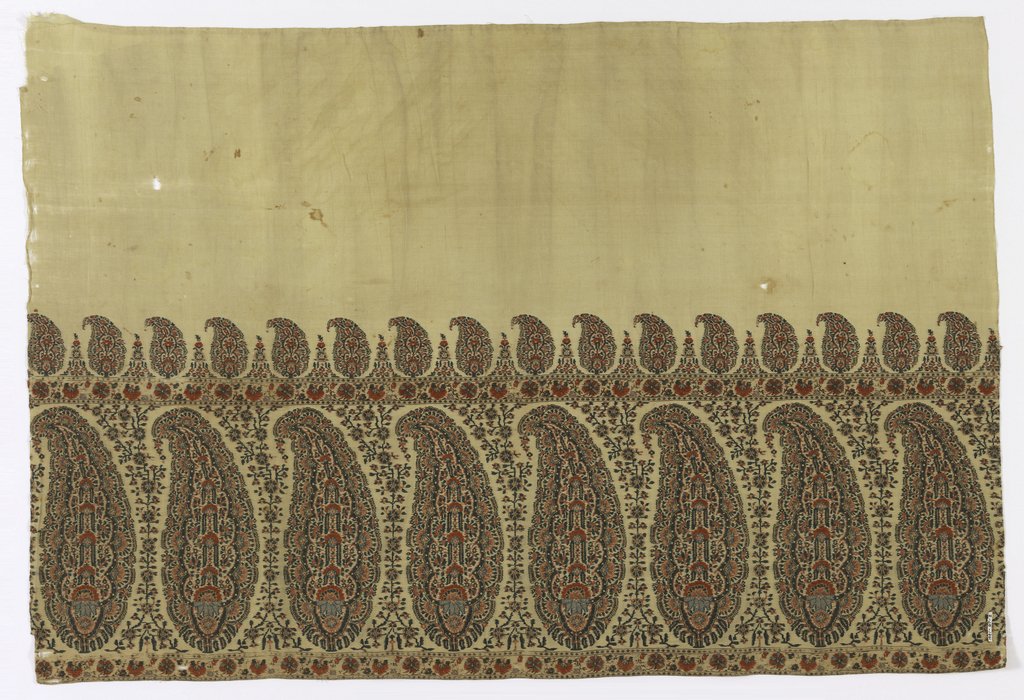When Napoleon presented Josephine with a shawl that had been given to him on his Egyptian campaign (1798–1801), he started a fashion craze that lasted half a century and had major economic impacts on several nations. Fashionable ladies wearing the extremely lightweight Neoclassical gowns of the period went wild for the soft, beautiful and very warm shawls made in Kashmir. The shawls were exorbitantly expensive, and European weaving centers soon attempted to produce the shawls locally.
The boteh or paisley form typical of these shawls is derived from Persian, Indian and European sources, and developed its current form, a teardrop with a lilting tip, during the late 18th and 19th centuries. Its English name refers to Paisley, Scotland, a major production center for imitation Kashmir shawls, although Norwich, England and Lyon, France were also competitive producers. The European imitators all used combinations of silk and wool to try to reproduce the lightness and sheen of Kashmir goat hair, or pashmina.
This shawl border will be on view in the exhibition Passion for the Exotic: Lockwood de Forest, Frederick Church beginning December 12, 2014.
Susan Brown is Associate Curator of Textiles at Cooper Hewitt, Smithsonian Design Museum.
